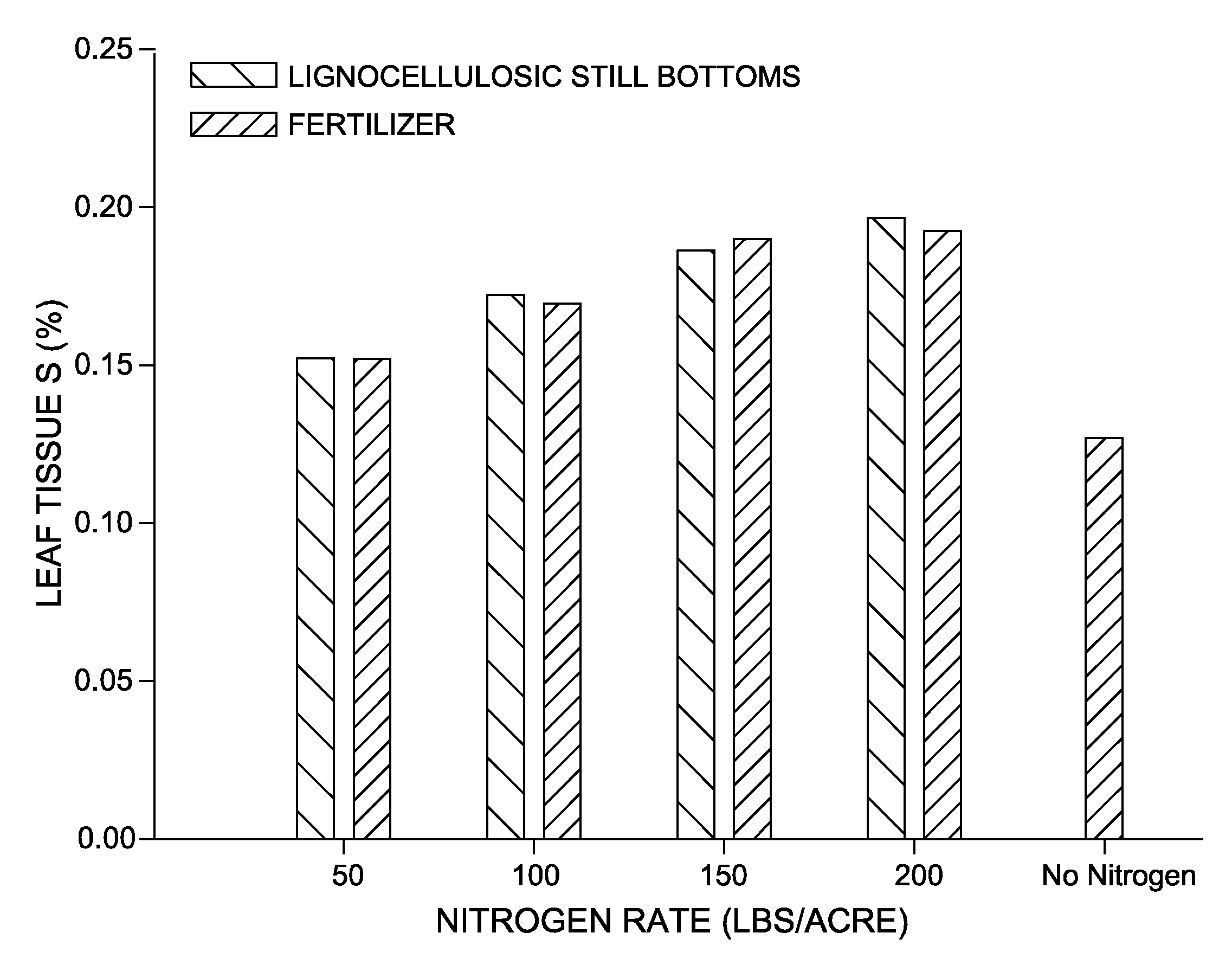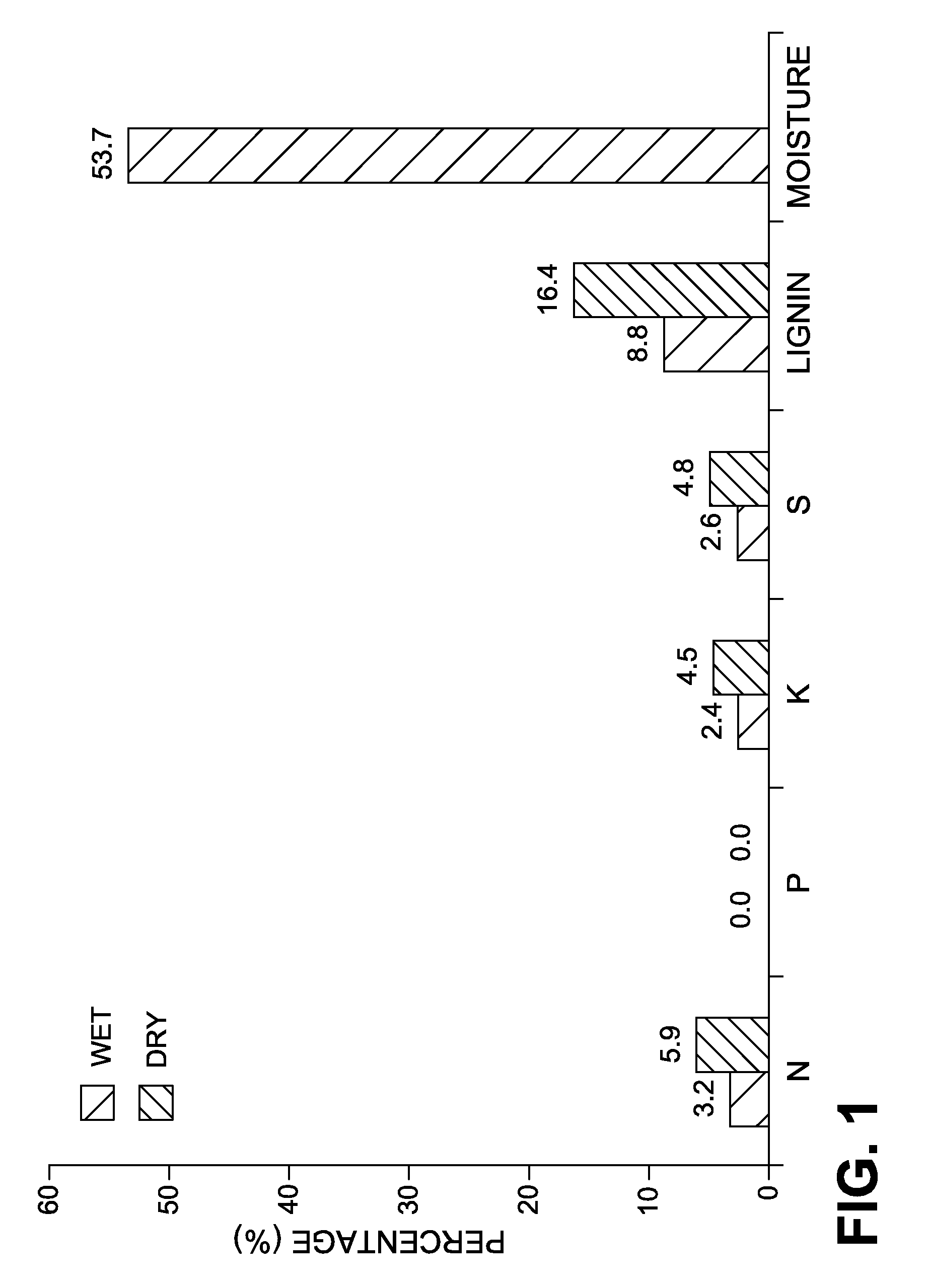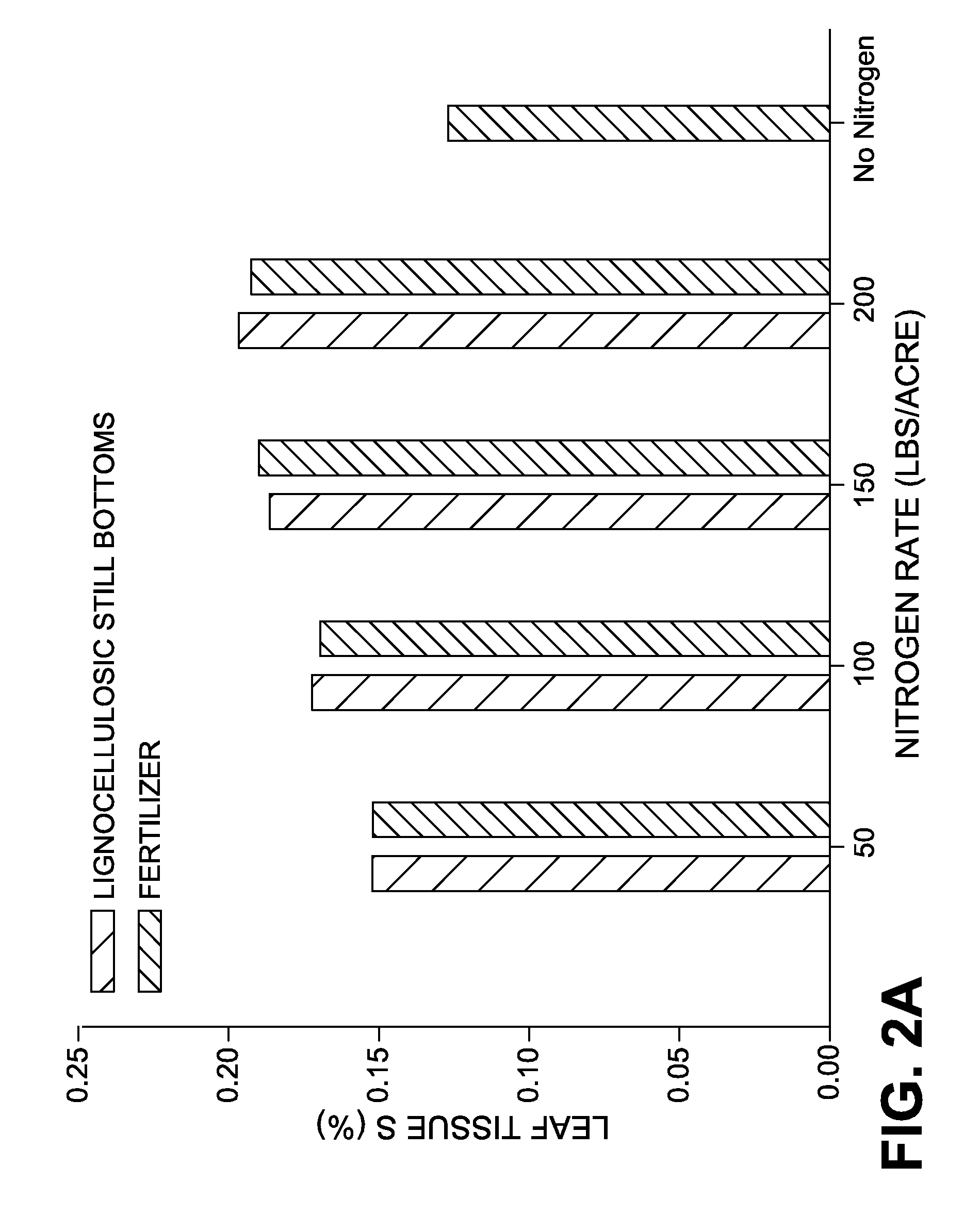Method for producing a soil conditioning composition from a lignocellulosic conversion process
a technology which is applied in the field of lignocellulosic conversion and composition production, can solve the problems of high operating cost of the plant, waste water treatment of still bottoms that requires significant capital to implement, and environmental impact is negative, so as to improve soil condition and improve soil condition. , the effect of increasing the water holding capacity
- Summary
- Abstract
- Description
- Claims
- Application Information
AI Technical Summary
Benefits of technology
Problems solved by technology
Method used
Image
Examples
example 1
Determination of the Total Solids Concentration in Lignocellulosic Still Bottoms
[0123]The determination of the total solids (TS) content of still bottoms is carried out as follows.
[0124]A still bottoms sample is transferred to a pre-weighed aluminum tin and the mass of the tin and sample is determined gravimetrically. The sample is then oven dried at 105° C. to constant mass (typically 24 hours). The combined mass of the dried solids and tin are measured gravimetrically. The total solids content is calculated by dividing the dried sample mass by the initial sample mass and expressed as a percentage.
example 2
Determination of the Organic Components in Lignocellulosic Still Bottoms
[0125]The organic components in a still bottoms sample are determined by quantifying identified and unidentified components. The percentage organic component is measured by weight on a dry basis using the method set out in Example 1 to determine the total dry solids content. Sugars, including glucose, xylose and arabinose are measured by HPLC using a CarboPac™ PA1 column (4×250 mm) consisting of a 10 μm diameter polystyrene / divinylbenzene substrate agglomerated with 580 nm MicroBead quaternary ammonium functionalized latex (2% cross linkage) and a 100 μeq / column anion exchange capacity (4×250 mm).
[0126]Organic acids such as acetic acid, lactic acid, glucuronic acid and galacturonic acid are measured using high performance liquid chromatography (HPLC) on a Dionex system, with an IonPac®AS11-HC column (4×250 mm) that consists of a 9 μm diameter ethylvinylbenzene polymer cross linked with 55% divinylbenzene polymer...
example 3
Determination of the Inorganic Components in a Still Bottoms Composition from Processing a Lignocellulosic Feedstock
[0130]The determination of the inorganic components in the still bottoms of the invention is carried out as follows. The percentage inorganic component is measured by weight on a dry basis using the method set out in Example 1 to determine the total dry solids content.
[0131]Anions such as chloride, phosphate and sulfate are measured using high performance liquid chromatography (HPLC) on a Dionex system, with an IonPac®AS11-HC column (4×250 mm) that consists of a 9 μm diameter ethylvinylbenzene polymer cross linked with 55% divinylbenzene polymer agglomerated with a 70 nm alkanol quaternary ammonium latex (6% latex cross linkage) and a capacity of 290 μeq / column (4×250 mm).
[0132]Cations such as sodium, potassium, magnesium and calcium are measured using a Dionex system, with an IonPac®CS16 column (5×250 mm) that consists of a 5.5 μm diameter ethylvinylbenzene polymer cr...
PUM
| Property | Measurement | Unit |
|---|---|---|
| w/w | aaaaa | aaaaa |
| w/w | aaaaa | aaaaa |
| w/w | aaaaa | aaaaa |
Abstract
Description
Claims
Application Information
 Login to View More
Login to View More - R&D
- Intellectual Property
- Life Sciences
- Materials
- Tech Scout
- Unparalleled Data Quality
- Higher Quality Content
- 60% Fewer Hallucinations
Browse by: Latest US Patents, China's latest patents, Technical Efficacy Thesaurus, Application Domain, Technology Topic, Popular Technical Reports.
© 2025 PatSnap. All rights reserved.Legal|Privacy policy|Modern Slavery Act Transparency Statement|Sitemap|About US| Contact US: help@patsnap.com



